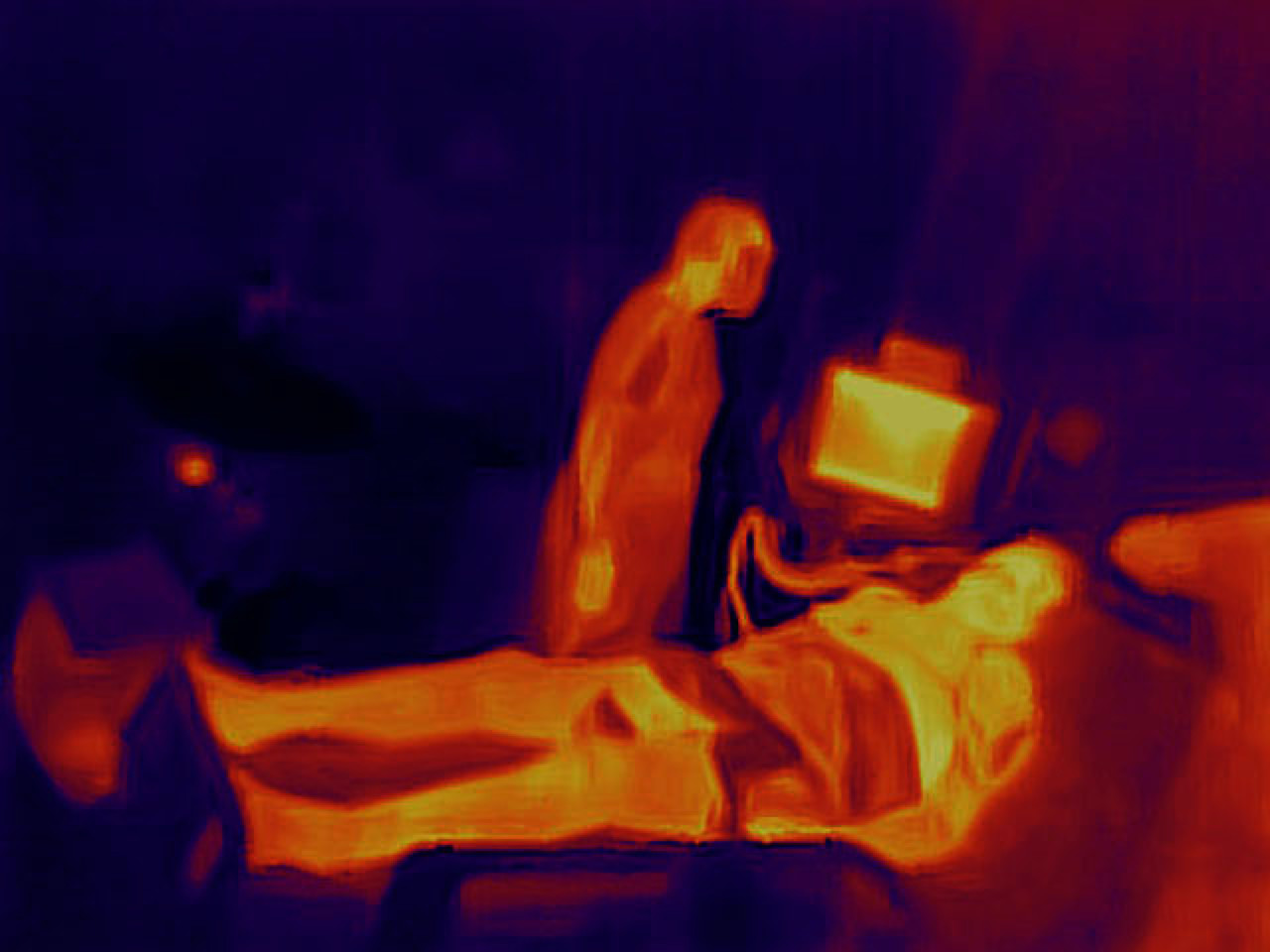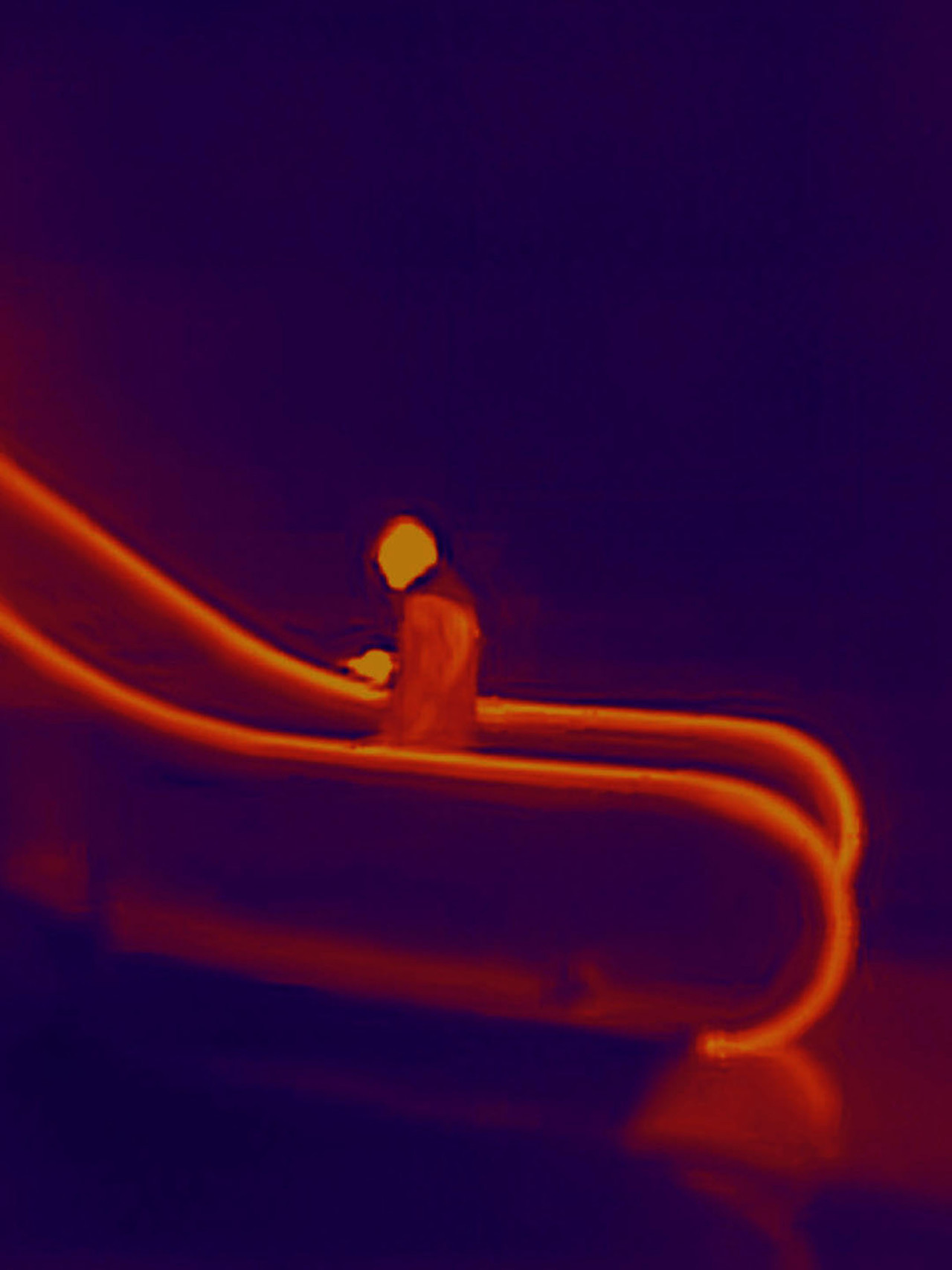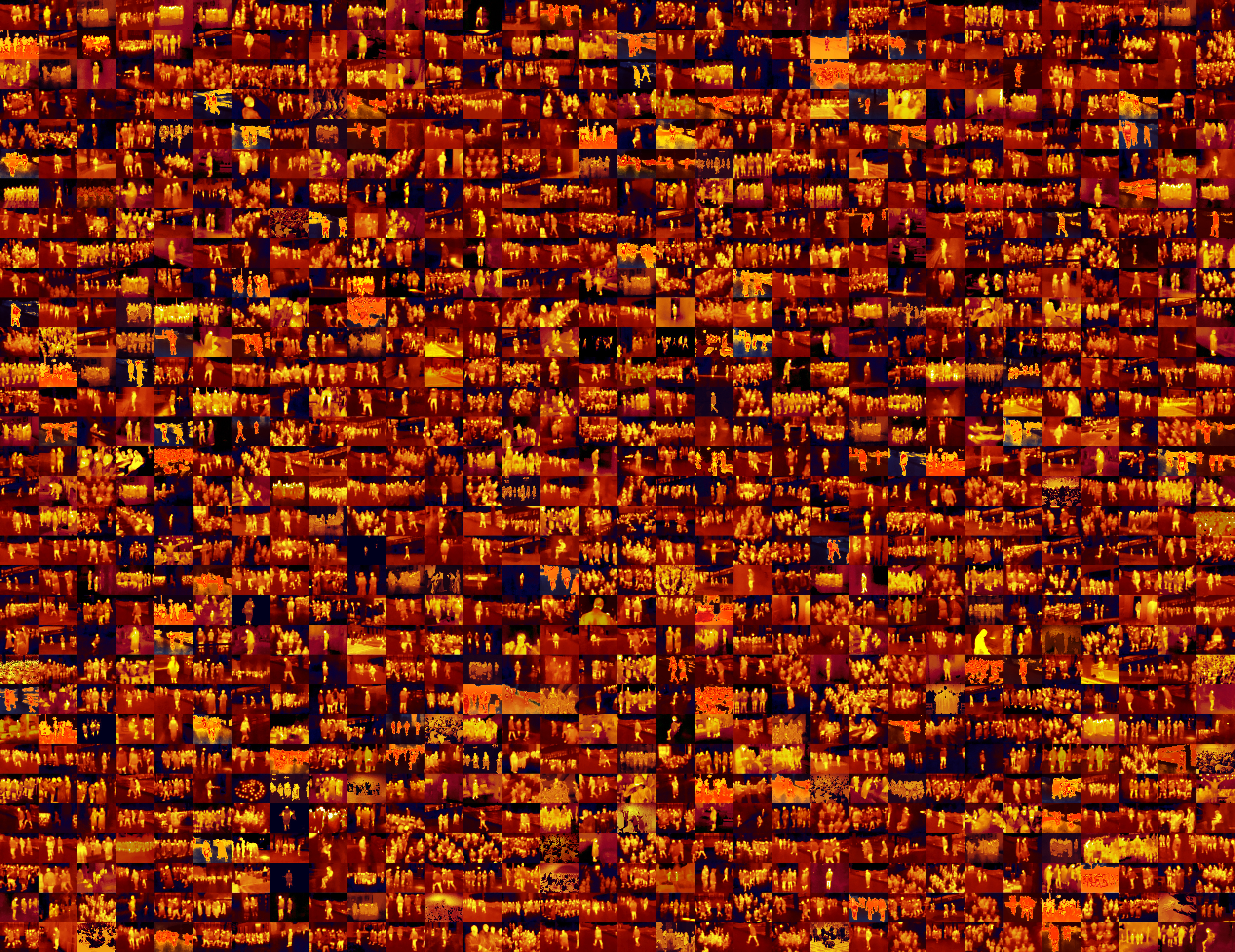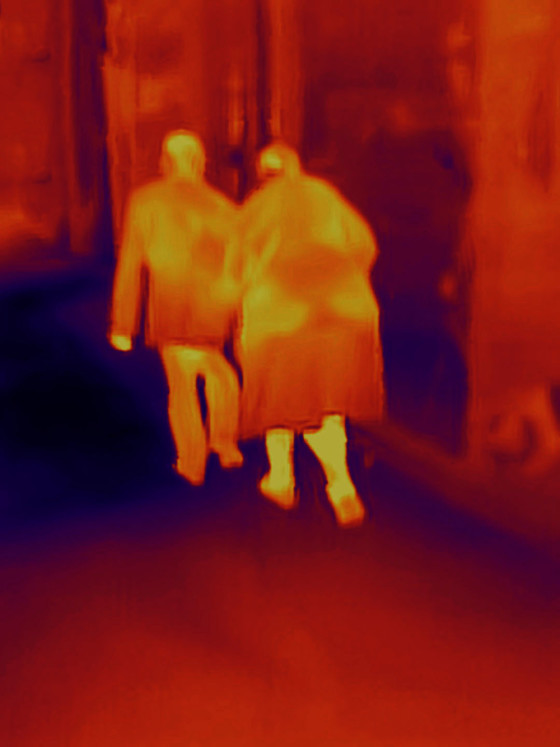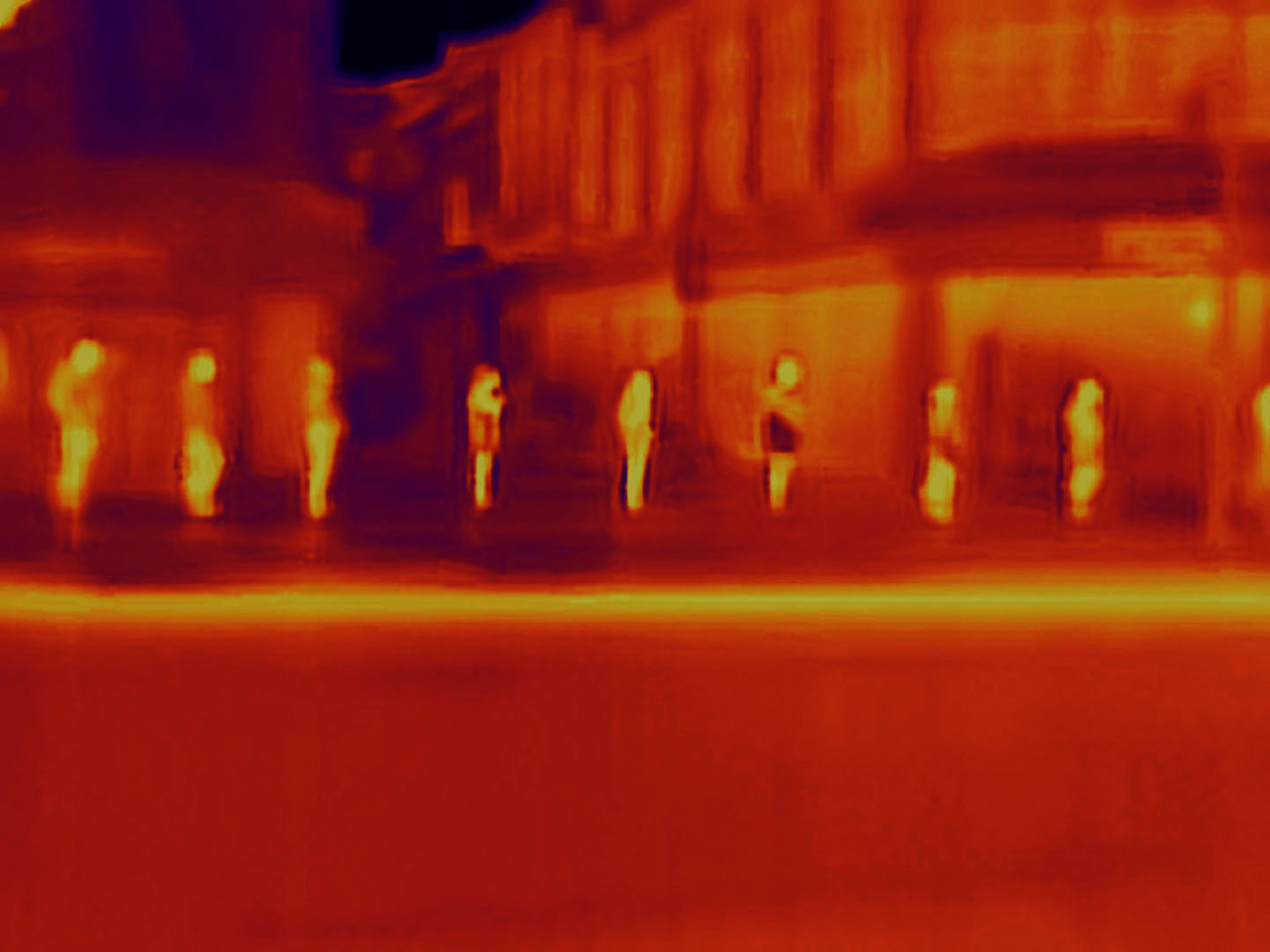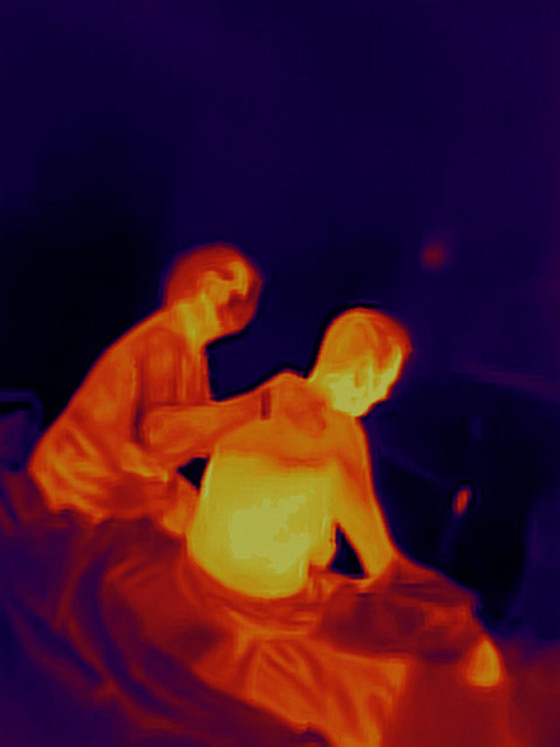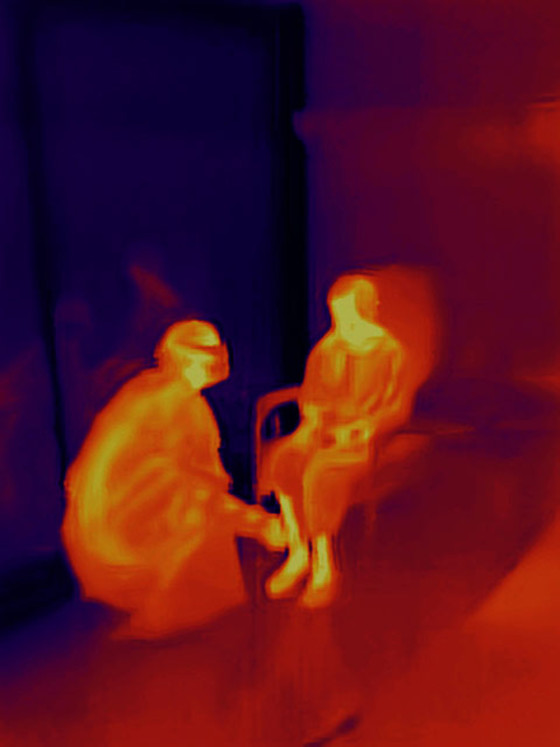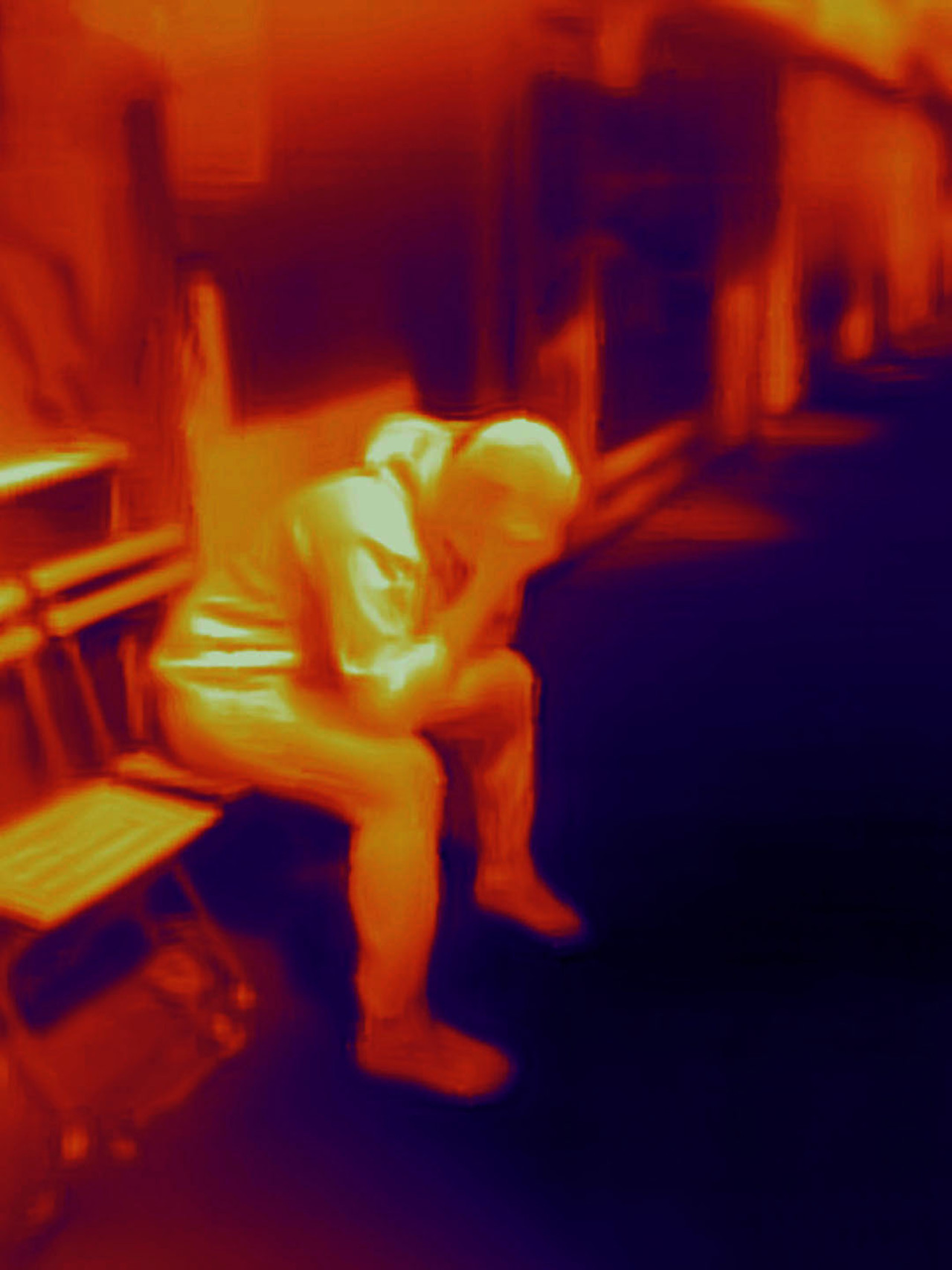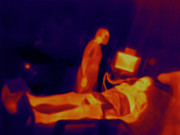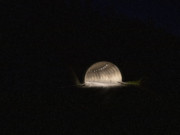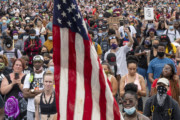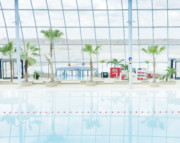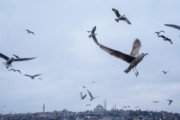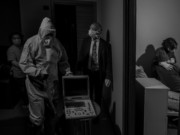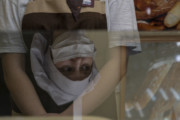I’m Starting to Feel the Pain
Antoine d'Agata's use of thermal imaging technology allows him to visualise the 'essence of humanity' in his documentation of France's streets and hospitals at the peak of COVID-19's ravages
Former Global Cultural Director of Magnum Photos — now photography and art consultant — Sophie Wright here speaks to Antoine d’Agata about his project, VIRUS. The book VIRUS is available now on Studio Vortex.
See a newly-curated selection of fine prints from this body of work — available now — on the Magnum Shop here.
“A second chance – that’s the delusion. There never was to be but one. We work in the dark – we do what we can – we give what we have. Our doubt is our passion and our passion is our task. The rest is the madness of art.”
Antoine d’Agata has spent the last two months sleeping on a sofa in Magnum Photo’s Paris office. In early April, as the coronavirus ripped across the continent and populations hunkered down in isolation, d’Agata heard French film director Jean-Luc Godard referencing this Henry James quote – words that have remained with him during this time of crisis.
The intensity of feeling and morals, that James articulates, is something d’Agata relates to. “I’m never just working – I’m always in an existential crisis, trying to generate an autonomous and pertinent position.” For him, this has not been a time for reflection, so much as action. “I cannot discuss the idea of creativity without addressing responsibility,” d’Agata explains, about the strong moral obligation he feels to be out in the community, making work. James’s words have been a source of strength to him during this effort.
Prior to COVID-19 calling a halt to the status quo, d’Agata was due to travel to Mexico to launch a book and exhibition that he had been working on in collaboration with a group of prisoners in a Mexican jail. Now, he is fully immersed in the process of photographing in the streets of Paris and in the coronavirus wards in hospitals, to make sense of the current crisis, and how it is impacting France. After two months camping out in the Paris office, with trips for related editorial assignments or independent projects, to Bordeaux, Argenteuil and Marseilles, he admits to feeling exhausted: “I’m starting to feel the pain”.
D’Agata doesn’t like to talk specifically about aesthetics when referencing his photography. For him, it is more about finding the right visual language to tell a story: “It’s not imagination or creativity – its necessity…I use a lot of different methods to try to make sense of the reality”. For now, his COVID-19 documentary work is dominated by the use of a thermal imaging camera. It’s a tool he first used to document the rituals of religious communities in Paris, for a Magnum Live Lab commission, on the three year anniversary of the Bataclan attacks in November 2018. He is drawn to how this camera reduces the human subjects in his images to a heat source, an essence of humanity, stripped of cultural specificity.
"[The thermal imaging camera is a tool d'Agata] first used to document the rituals of religious communities in Paris, for a Magnum Live Lab commission, on the three year anniversary of the Bataclan attacks in November 2018. He is drawn to how this camera reduces the human subjects in his images to a heat source, an essence of humanity, stripped of cultural specificity"
-
On the first day of lockdown he took this camera and went out into the city: “The first few days I was fascinated by the emptiness and then I went closer – to the homeless, to people looking for food, to the police – and became more interested in the movements of bodies in space – [in their] isolation.” The initial series of images produced in Paris, was quickly picked up editorially – the stark, flame-hued compositions offering an alternative, dystopian vision of the emptying streets. He has continued to push himself to cover and record different aspects of the pandemic’s impact: “I have gone, where it scared me – to confront the crisis – amongst the most damaged segments of the population…worrying about contamination.”
D’Agata has used various strategies to meet the challenge of encompassing the immensity of the event and its impact. Before the virus spread to Europe, he was collecting images from social media in China – an approach he incorporated most recently in S.T.A.S.I.S, the book he released via his own publishing house Studio Vortex (2019). These raw fragments of reality, from the internet, often have the capacity to capture rolling news in a way that classic photojournalism cannot reach. In the past he has gridded such found images, the multiplicity of viewpoints referencing the unquantifiable nature of experience. Like all of us he has felt overwhelmed by the numbers for this global pandemic, which at times can seem “beyond reason”.
D’Agata has also been in correspondence with a friend, Mathilde Girard, a young philosopher and psychoanalyst, who is writing a diary every day, collating stories and recollections on the crisis. He admits that this has also been a means to sustain himself in his work and someone to have someone to bounce ideas off. Although he has had little time for reading he is also methodically keeping one or more articles per day from the press, which he feels is important to telling story.
Just like many of us, d’Agata is balancing all this productivity alongside his other work: calls with Magnum staff, an online workshop with ICP, working on current publishing or film projects and keeping in conversation with his family and friends – speaking with his daughters, his partner in Mexico and his elderly mother in her apartment in Marseilles.
To date, he believes he has taken about 10,000 images – 6,000 from the street, 80 portraits of refugees working with MSF; he has photographed in research labs and documented the testing programme, taking over 3,000 in various hospitals where he sometimes worked and slept for five days at a time, over April and May. For these, he photographed the interactions between nurses, doctors and patients using the same thermal imaging camera. Like so many of us, he is touched by the dedication of medical staff. He says, “People are doing much more than they are paid to do. In the hospital I saw people dying and nurses who were helping people do that with dignity, holding them in their arms.”
"A lot of work will come out of this [pandemic]. But artists and photographers are people who are good at making a living out of having nothing to say. I’m worried about the state of humanity, not the industry [...] The consequences are probably worse than the virus itself: the way in which the war against the disease is being used to strengthen control, both political and economic"
- Antoine d'Agata
As to what impact this crisis will have on photography, d’Agata says somewhat scathingly: “A lot of work will come out of this. But artists and photographers are people who are good at making a living out of having nothing to say. I’m worried about the state of humanity, not the industry.” He is skeptical about what things will survive. “What has helped me since the beginning has been the reference of philosophers like Giorgio Agamben to an ongoing, invisible economic war. The consequences of this are probably worse than the virus itself: the way in which the war against the disease is being used to strengthen control, both political and economic.” For now, he wants to continue this documentary, hoping to gain access to the subway and hospitals in Nancy and Marseille, photographing in the places that have been at the frontline of the disease, where the real work is being done.


